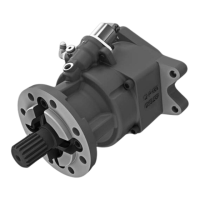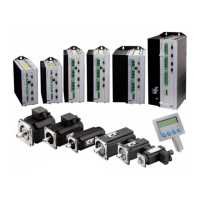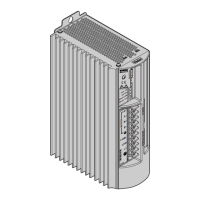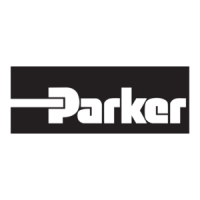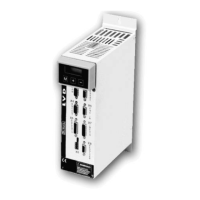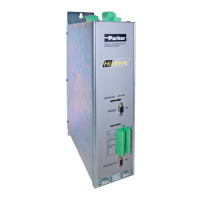5-2 Control Loops
DC590+ Series DC Digital Drive
1. The loss of converter gain needs to be compensated in an accurate way which is the objective of the adaptive algorithm.
2. The above algorithm also relies on the right start-up value of firing angle in the incoming bridge in order to minimise both the "dead-time"
(time interval of zero current referred to below) as well as the rise time to the required current demand.
In order to get the right start-up value of firing angle the knowledge of the operating BEMF is necessary. In the Drive, this is achieved by a
combination of a hardware peak current detector and appropriate software algorithm.
Bridge Changeover Delay
The bridge changeover "dead-time", i.e. time interval of zero current, is programmable from 1 to 1500 (via Reserved Menu) with a default value of 1.
For values from 1 to 6:
The delay can be set at multiples of 1/6 mains period, i.e. max. 6 x 3.33 = 20ms at 50Hz. This is relevant for use with large power converters where it
is advisable to allow more time for snubber currents to subside before reversal is enabled. It is also relevant for motors with very large armature
inductance where zero current detection is more sensitive and therefore a "factor of safety" in the bridge changeover delay is advisable.
For values from 7 to 1500:
The delay corresponds to 7 x 1.33s up to 1500 x 1.33s = 2ms maximum.
Manual Tuning
NOTE This procedure is rarely used or required, if possible use Autotune.
If the motor is permanent magnet or (very rarely) wound-field of relatively high permanent magnetism, and the drive is a 4Q drive, then clamp the
shaft prior to using the 4Q Autotune process (default). This mode of Autotune produces current pulses on alternate thyristor bridges, and thus the net
rotational torque is very low.
There are two circumstances where a manual tuning process would be required:
1. The motor is permanent magnet or (very rarely) wound-field of relatively high permanent magnetism, and the drive is a 2Q drive.
2. The Autotune process has failed with AUTOTUNE ERROR message. The possible causes of an Autotune error are:
• The motor shaft was rotating, or was caused to rotate.
• The field current was seen to exceed 6%, when a field-off Autotune had been selected, or the field current stopped during a field-on
Autotune.
• The drive to armature wiring was open-circuit.
• The discontinuous current boundary was found to exceed 200% of either the stack rating or the nominated motor armature current rating
(see A below).
• Large imbalance in the three-phase voltages of the supply (see B below).
• A hardware fault relating to current feedback was detected on the control board.
If the cause of the Autotune failure can be determined and rectified then do so and simply repeat the Autotune process.

